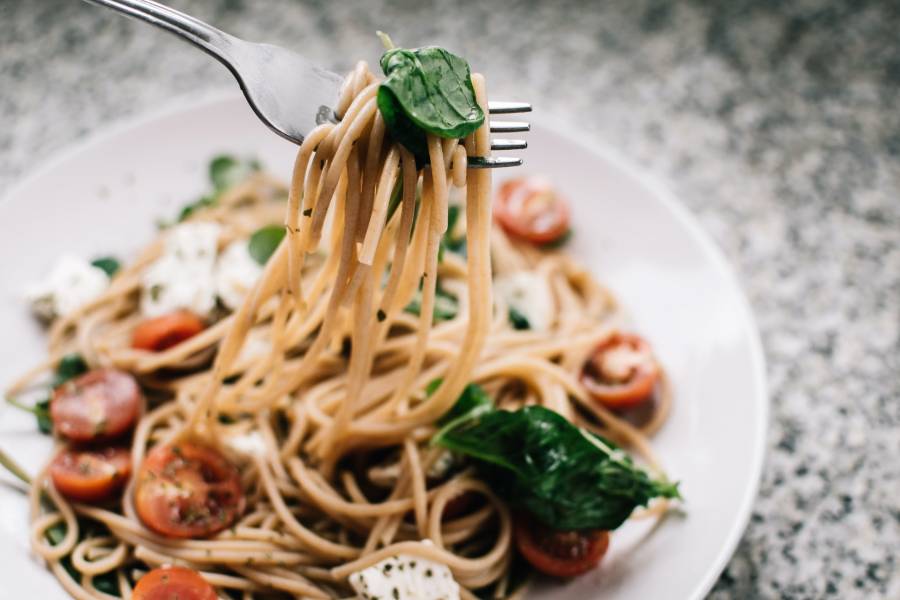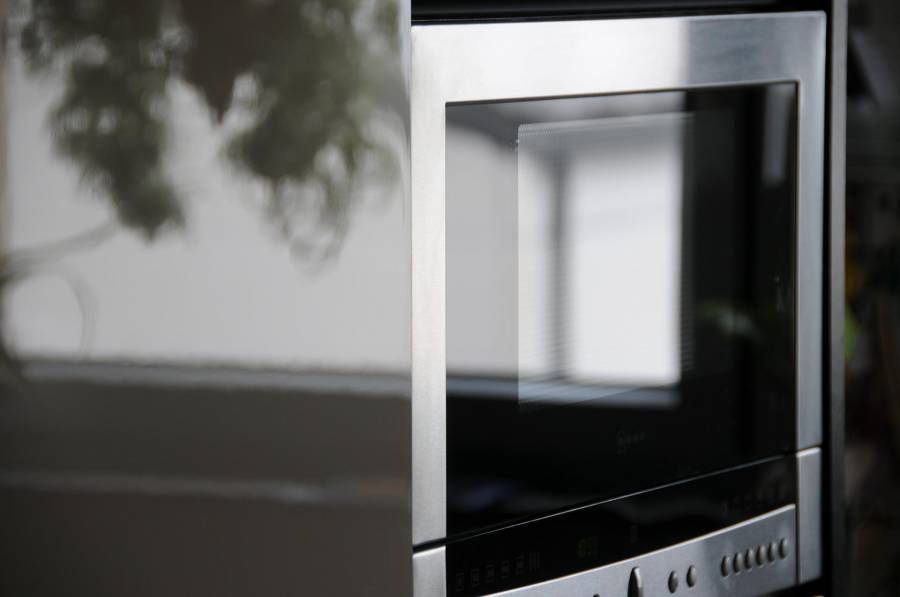We recently came across a post on reddit.com concerning plates that hit inside the microwave.
It read, “… why is it when I microwave my soup, the bowl is much hotter…?”
But don’t microwaves heat only the food inside a bowl? Well, we are about to discover why you can’t remove the plate with your bare hands.

Today, we will examine why some plates get hot in a microwave.
How Do Microwaves Work
To explain our answer better, we need to start from the basics. You will only know why your plate heats up if you know how microwaves work.
It is a common misconception that microwaves work by heating the food/items inside by differentiating molecules. It is not entirely accurate.
Microwaves operate by a technology known as dielectric heating, a process of moving energy to polar molecules.
The idea is that microwaves are like any other photon and will do one of three things when it meets matter: the waves can be absorbed, reflected, or pass through the material.
As you already know, there are different materials out there. Each material has different probabilities for any of the three things above.
Some are recommended for microwaving, while others are not.
So, while you are wondering why some plates heat up in microwaves, it could be that you don’t understand the material well.
Dielectric Heating
This topic is quite expansive, but we will make it as simple as possible.
Microwaves operate by heating polar molecules (or molecules that behave like tiny magnets) in the microwave area.
These molecules are contained in liquids like water, fats, sugar, and salt and will heat fast inside a microwave.
Materials like pure ole glass don’t contain any molecules. Instead, the microwave energy will pass through pure glass without affecting it.
Remember, we said earlier that microwaves could either heat, pass through, or be reflected.
Some items are designed from plastic or ceramic, which are not microwave friendly. They contain polar molecules or feature tiny air bubbles in them.
Hence, they will heat up when placed inside a microwave.
Dielectric heating has something to do with the heating of electrically insulating materials through dielectric loss.
Here, energy is dissipated when the electric field changes inside the material.
The molecules try lighting up with this changing electric field, which may come from free-space electromagnetic waves.
It may also come from an alternating electric field in a capacitor.
And that is where microwaves get their operating technology. They heat things from the inside out.
How Different Materials Behave In Microwaves
Now that we understand the mechanisms, it should be easier to answer the question of why some plates get hot when microwaved.
The revolving antenna inside flatbed microwaves makes heating microwaved food accessible.
Most dishes are marked whether they are microwave friendly or not.
As stated above, it all depends on the material your plate is made from. It is because you need the right plate to avoid thermal shock.
You can use the microwave to heat food over and over. However, it would help if you chose thick ceramic or glass plates that allow microwaves to pass through.
Or at least choose something that won’t become hot too fast.
Water and food absorb microwaves easily. That is why they get hot much faster when placed in the oven.
Metal is a good conductor of electricity but tends to reflect microwaves. Hence, they shield the oven, preventing any heat leakages.
Your food will not get hot if microwaved inside a metal bowl.
Glass, paper, and most plastics allow microwaves to penetrate through. Thus, they are the most recommended microwaving materials.
The microwaves will only target the molecules inside your food with pure glass. Your plate remains cold and safe all along.

Why Some Dishes And Plates Get Hot In Microwaves
The main reason is that the plate is not designed for such applications.
You will notice that certain kitchen ceramics and stoneware are not labeled for microwave use.
They may contain some traces of heavy metals inside their glades that reflect heat. Hence, they can either crack or explode when the heat gets too much.
Besides, certain plastic and papers contain impurities that will melt or burn quickly under low-temperature settings.
Therefore, by turning on the microwave, you should carefully check the material and consider the labels.
Furthermore, specific earthenware dishes, plates, and containers will get hotter even when labeled for microwave use.
It could be likely because they still contain materials that may absorb heat. However, such plates should still be safe, so do it carefully.
Another simple explanation could be the heat in the food itself. What happens when you put scorching food on a cold plate?
The plate will likely heat up too. It might not be the best explanation, but it’s a possibility.
You can quickly test this theory:
- Pick a bowl that seems to heat inside a microwave.
- Fill it with tap water and microwave until it boils. Feel how hot the outside of the bowl is.
- Cool the bowl again and boil the water separately. Pour the hot water inside the bowl and feel how hot it gets outside.
The problem is if the microwaved bowl has a lot of heat. But it feels hotter with the boiled water; your food is hot.
Why Porcelain Gets Hot In A Microwave
Your porcelain bowl has a glaze that is likely to cause overheating.
If the glazes are designed and created wrongly, they retain heavy metals that will absorb microwaves.
Porcelain and ceramics are made from different materials. Such combinations could have energy-reducing effects based on specific components.
When exposed to microwave frequency, these materials lose energy at different levels. And that is how they heat.
Consider fused silica, which has low energy loss. A place made from this material will not heat.
Handcrafted and crystal pottery is not mostly microwave friendly. They contain traces of water that heats up under microwave heat.
When the temperature gets too high, your container may burst, leading to unbalanced thermal expansion.
Using a microwave-friendly plate is undebatable. Consider materials like borosilicate glass, some ceramic, and some plastics.
However, ensure they are labeled for such use before continuing.
Ceramics
Ceramic is safe to use in a microwave. However, most contain materials that may increase microwave absorption.
Because the container shields, food takes on the highest concentration of microwaves as it passes through the food.
Hence, they will always be hot when you take them out.
Most ceramics in our kitchen will heat your food safely inside the oven. If you notice that it heats too much, check again what material it’s made from.
Conclusion
Why do some plates get hot in the microwave? As you can see, the main reason is that they are not manufactured for such use.
However, even microwave-safe plates can heat up too due to the food’s heat. For instance, glass can crack or shatter under excessive temperatures.
So, be careful when handling anything inside the oven.
